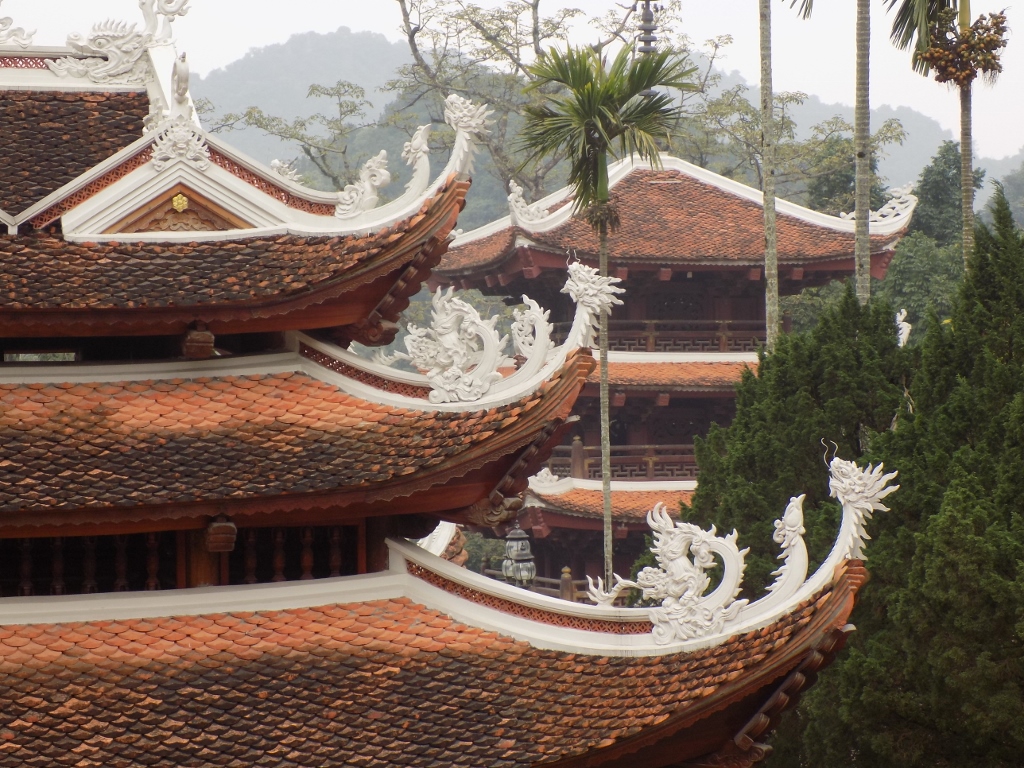
Hanoi, the bustling capital of Vietnam, attracts travelers from all over the world with its vibrant energy and rich cultural heritage. But beyond its busy streets and colonial architecture lies a place of spiritual significance: the Perfume Pagoda. Nestled within the verdant embrace of the Perfume River, this sacred site offers a journey into the heart of Vietnamese faith, a chance to witness breathtaking landscapes, and an escape from the city’s humdrum. Join us as we embark on a day trip to the Perfume Pagoda and discover the beauty and tranquility that awaits.
A Tapestry of History and Spirituality: The Pagoda’s Rich Heritage
The Perfume Pagoda, also known as Chùa Hương in Vietnamese, is located in Huong Son Commune, My Duc District, about 60km southwest of Hanoi. It is considered one of the most important religious sites in Vietnam, attracting thousands of pilgrims and tourists every year. The pagoda complex consists of several temples and shrines built into the limestone cliffs of Huong Tich Mountain, forming a stunning backdrop against the lush greenery.
According to legend, the Perfume Pagoda was discovered over 2,000 years ago by an old monk who sought enlightenment in the mountains. He named it Huong Tich (meaning “fragrant cave”) after the fragrant incense he found there. Since then, the site has been a place of pilgrimage for those seeking blessings and good fortune. Throughout history, the pagoda has undergone numerous renovations, creating a unique blend of architectural styles and cultural influences.
The Scenic Ascent: Reaching the Pagoda Through Tranquil Landscapes
The journey to the Perfume Pagoda begins at Thien Tru pier, where you board a traditional wooden boat for a peaceful ride along the Perfume River. As you leave the city behind, you’ll be surrounded by lush greenery and picturesque views of the rural countryside. Take in the sights and sounds of daily life along the river, as local farmers tend to their fields and fishermen cast their nets.
As you approach the base of Huong Tich Mountain, you’ll disembark from the boat and begin a scenic hike up to the pagoda. The path is lined with towering limestone cliffs, covered in vibrant green vegetation. Along the way, you’ll encounter small temples and shrines built into the rocks, adding to the mystical atmosphere of the place. The climb may be challenging, but the stunning views of the valley below make it all worth it.
Architectural Marvels: Unveiling the Pagoda’s Stunning Structures
The Perfume Pagoda complex is made up of several temples and pagodas, each with its own unique architecture and cultural significance. The main temple, Thien Tru, is dedicated to Quan Am, the Goddess of Mercy. It is a magnificent three-story structure, with colorful tiled roofs and intricate carvings depicting Buddhist legends. Inside, you’ll find a statue of Quan Am, adorned with precious jewels and surrounded by offerings from pilgrims.
Another highlight of the complex is the Huong Tich Cave, located at the top of Huong Tich Mountain. To reach the cave, you’ll need to climb 120 steep stone steps. Once inside, you’ll be greeted by an otherworldly landscape of stalactites and stalagmites, illuminated by natural light streaming through the openings in the ceiling. This cave has been considered a sacred site for centuries, and many believe that bathing in its waters will bring good luck and health.
A Cultural Immersion: Experiencing the Pagoda’s Festivities and Traditions
Aside from its religious significance, the Perfume Pagoda is also a hub of cultural festivities and traditions in Vietnam. The most popular time to visit is during the Perfume Pagoda Festival, which takes place from the 6th day of the first lunar month until mid-March. During this time, pilgrims from all over the country make their way to the pagoda to pray for blessings and participate in the colorful celebrations.
One of the main events of the festival is the Huong Pagoda pilgrimage, where people carry offerings and burn incense as they make their way up to the main temple. Along the way, you’ll see performers dressed in traditional costumes, music and dance performances, and vendors selling local souvenirs and snacks. It’s a lively and vibrant atmosphere that truly captures the essence of Vietnamese culture.
Planning Your Visit: Practical Tips for a Memorable Day Trip
If you’re planning a day trip to the Perfume Pagoda, here are some practical tips to ensure a smooth and memorable experience:
- Start your journey early in the morning to avoid crowds and hot weather.
- Wear comfortable shoes as the hike can be steep and slippery.
- Bring plenty of water and snacks for the hike.
- Respect the local customs and dress modestly.
- Be mindful of your surroundings and follow instructions from your tour guide.
For those who want to fully immerse themselves in the cultural experience, it is possible to stay overnight in one of the guesthouses near the pagoda. This will give you more time to explore the area and witness the evening ceremonies at the temples.
Conclusion
A day trip to the Perfume Pagoda is not just a sightseeing tour, but a journey of spiritual and cultural discovery. From its rich history and stunning natural landscapes to its intricate architecture and lively festivals, this sacred site offers something for every traveler. So why not escape the hustle and bustle of Hanoi for a day and embark on a journey to tranquility? The Perfume Pagoda awaits, ready to enchant and inspire.